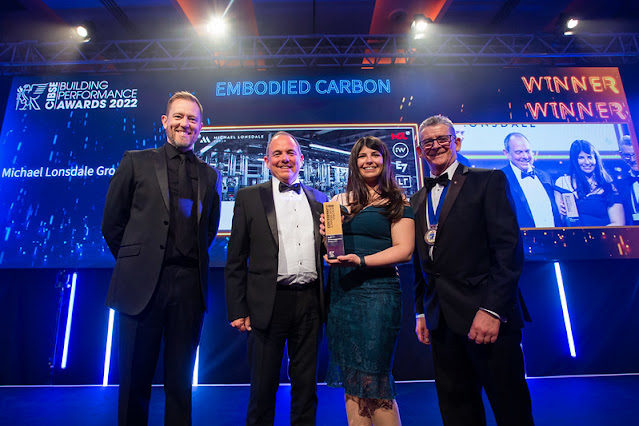From strength to strength
After the University
of Bradford’s unprecedented second win of the top prize at the Chartered
Institution of Building Services Engineers (CIBSE) Building Performance Awards,
CIBSE’s Technical Director Dr Hywel
Davies explains what makes the
University’s work stand out
 |
| The University adopted a 'fabric-first' approach, renovating outdated and inefficient elements |
The University of Bradford’s Department of Estates and
Facilities is no stranger to the Building Performance Awards – they won two
awards in 2012, including the overall Champion’s Award, for the impressive work
they had carried out under their imaginative ‘Ecoversity’ programme. That they
are back again in 2017 with another two wins under their belt proves the
effectiveness of the strategy they created and their long term commitment to
buildings that perform to meet the needs of the University.
In common with many universities in the UK, the Bradford has a large and varied building portfolio, which often includes
examples that are a challenge for FMs due to their age or
function. In Bradford’s case this is a bigger problem, because most of their
estate’s 28 buildings were constructed in the 60s and 70s, with the attendant
problems of poor thermal performance, asbestos, large single-glazed areas and
blown air heating.
Unfazed by considerable hurdles, the Estates and Facilities team
implemented their ‘Ecoversity’ approach, which is designed to tackle the issues
in both the building fabric and the culture of the University that were holding
it back. This involved considerable physical improvements. They over-clad a
thirteen-storey 33,940 sq m tower and a three-storey 8,500 sq m workshop block
dating from the sixties; implemented LED lighting and controls installations
and replaced transformers and pumps. They also introduced engineering and
control improvements to the district heating network; expanded the BEMS, and
reviewed and optimised compressed air use.
As well as these one off measures, the team also conduct
rolling energy and water audits, regularly review their air conditioning
systems and consult with users over operating times, and have installed a
second Combined Heat and Power (CHP) system as well as optimising the existing
plant.
 |
| Bradford were commended for including staff and students in their drive to develop the University sustainably |
On top of this, the Estates and Facilities team introduced
changes to the culture around sustainability within the University. This
involved expanding Ecoversity beyond the running of Estates and Facilities and
into the formal and informal learning experience of all the University’s
students.
Staff and students are involved in their initiatives, and a strong
sense of community is fostered around the idea of sustainable development of
the University site, in order to help occupants and users improve behaviours.
To oversee this, two new posts – mechanical and electrical building services
technicians – were created in 2014. One of their core roles is to identify
anomalous energy use and wastage, and apply on-site solutions.
 |
| The Bradford team previously won the top prize in 2012, the called the Carbon Champion Award |
The results speak for themselves: City Campus in Bradford is
the only place in the world where a single estate has three ‘BREEAM
Outstanding’ buildings and a Passivhaus building within 100 metres of each
other with the highest ever BREEAM Outstanding score for a university for the
Bright Building. It has cut its carbon footprint by a stunning 35% over the
last decade and dramatically reduced utility costs by 27% in a market that has
risen by 90%, saving £8 million compared to ‘business as usual’.
Overall its
wide ranging initiative has been a great success for the University and is an
example for all in the sector that buildings that perform effectively for the
occupants save money, and not just energy.
.png)


Comments
Post a Comment